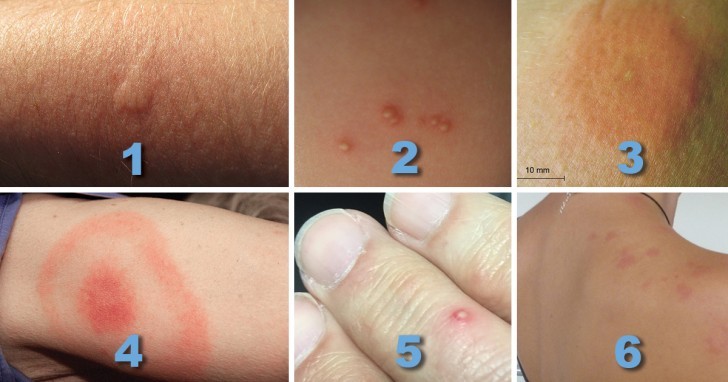Be careful! Insect bites can be very dangerous!

In the summer we tend to feel freer, we wear shorts, sleeveless tops, walk barefoot, and do less to protect our bodies.
This is one of the reasons why we are often bitten and stung by insects and why many of us have scars on our bodies that remain for a long time, as memories of a more or less painful experience.
There are many small animals and insects in nature that are ready to bite or sting, either for defense or for survival. Consequently, it is a mistake to underestimate the importance of a sting or a bite because it could lead to more serious complications.
For this reason, it is good to know about different types of bites and stings and how to behave accordingly and this article offers a useful guide to keep in mind.
How to distinguish between different bites and what to do if you are stung or bitten.

1. Mosquito Bites: A mosquito bite appears as a small reddened subcutaneous swelling or bump that causes localized itching. It is usually not necessary to take other precautions other than to massage the swelling with a soothing ointment, but if you experience other disturbing effects such as fever, joint pain, and glandular swelling, it is a good idea to call a doctor as the insect may have been infected.
Image: Mosquito Bite
2. Flea bites: Usually following a flea bite there are skin rashes, localized bumps and swelling, and itching. Bumps should not be scratched frequently as this may cause them to swell further and form white-topped blisters. In the case of dermatitis or severe itching, one can use over-the-counter anti-itching creams and antihistamine medications.
Image: Flea bites
3. Bee stings: When you are stung by a bee, you immediately feel a sharp pain and then later some itching. It is understood that it is a bee sting because the insect's stinger remains under the skin, or perhaps even the insect, itself. It is important to remove the stinger with a pair of tweezers to make sure you do not get any infections. A bee sting should not be treated with anything specifically if it is not painful. However, in the case of nausea, vomiting, fever, or difficulty in breathing it is absolutely necessary to call a doctor or go to the emergency room, depending on the severity.
Image: SuperManu / Wikimedia
4. Tick Bites: A tick bite is more dangerous than the other insect bite or sting because it does not manifest any symptoms even hours later. As soon as a tick has been detected it is necessary to extract the insect, pulling it out by the head. Use a pair of tweezers, but if you cannot do it by yourself then go to a pharmacy or a doctor. After a person has been bitten by a tick, round red spots may appear on the skin indicating Lyme Disease. Do not be alarmed but will be necessary to see a doctor who can prescribe the appropriate antibiotic treatment.
Image: OpenStaxCNX / Wikimedia
5. Ant Bites/Stings: Some ants attack human beings by biting or stinging and injecting poison. The symptoms consist of localized pain, itching, redness, swelling, and induration. If pain persists for a long time, you can apply a topical hydrocortisone cream.
Image: Daniel Wojcik/ US Department of Agriculture
6. Bed bug Bites: These insects are not a vehicle of any disease but the allergic reaction they cause can be extensive. A bed bug bite is recognizable by the fact that itching occurs in the morning and focuses on the area of the back and stomach. No treatment is required, but if the itching is unbearable or if you have sores, then you should contact your doctor.
Image: Piotr Naskrecki/CDC
Knowing about insect bites and stings is very important! The proper knowledge helps you to understand when and when not to get alarmed!





